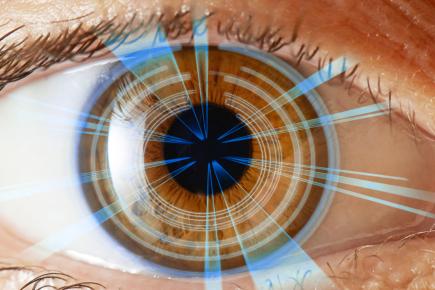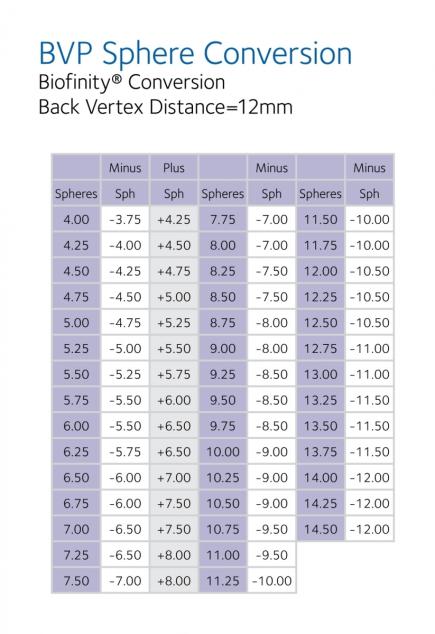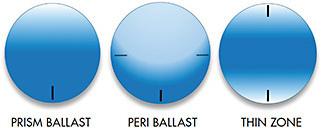by Dr. Melody Huang

Contact lens designs refer to more than just cosmetic contact lenses. They include optical designs that correct for a wide range of vision, including myopia (nearsightedness), hyperopia (farsightedness), astigmatism, and presbyopia (age-related near vision changes).
Soft contact lens designs
These are the most frequently prescribed contact lens designs, along with the percentage of contact lens patients in the United States who wear that particular lens design [1]:
- Spherical (52%)
- Toric (27%)
- Multifocal (15%)
Other contact lens designs include:
- Toric multifocal (no data)
- Myopia management (less than 1%)
- Monovision (4%)
- Cosmetic (color) lenses (1%)
Spherical design
These contacts suit myopic or hyperopic patients with little to no astigmatism power (also called cylinder or “cyl”). Typically, these include patients with less than -0.75 D of astigmatism.
Spherical lenses are available in daily, 2-week, and monthly replacement schedules.
Note that spherical powers are available in 0.25 D steps. In higher powers, the increments become 0.50 D steps. Typically, this includes any powers above +/-6.00 D, although this number varies slightly in some brands. For example, spherical powers are available in -6.00 D and -6.50 D, but generally not -6.25 D.
Determining spherical lens power
If you’re looking at a prescription, you may have noticed that the eyeglass and contact lens prescriptions are different. There are a few reasons for this difference. When determining the power of a spherical contact lens, the eye care practitioner must consider the spherical equivalent and vertex conversion.
Spherical equivalent
The spherical equivalent gives the closest estimate of a prescription without including any astigmatism correction. This number is calculated by taking the cylinder power of the eyeglass prescription and dividing it in half. Then, add the resulting number to the spherical power. You don’t need the cylinder axis for any calculations.
For example, let’s say the eyeglass prescription reads +2.00 -0.50 x 180. First, divide -0.50 in half, which equals -0.25. Then, add -0.25 and +2.00. The resulting spherical equivalent is +1.75 D. Be careful when adding minus and plus signs!
Because spherical power only comes in multiples of 0.25, the eye care practitioner has to use their professional judgment if the cylinder is an odd multiple of -0.25, such as -0.75 or -1.25 (since dividing these numbers in half doesn’t yield a multiple of 0.25).
Vertex conversion
Vertex conversion is a calculation that compensates for the change in prescription when you go from eyeglasses to contact lenses. Depending on how far a lens sits from your eye, your brain perceives it as stronger or weaker, even though the power of the lens remains the same. This is why the vertex distance (distance from the back of the lens to the front surface of the cornea) is important!
Note that you only have to worry about calculating the vertex conversion if you have a power of +/-4.00 D and up.
For eyeglass lenses, most eye care practitioners use a standard vertex distance of 12 millimeters (mm) from the cornea. Since a contact lens sits directly on the eye, we consider the vertex distance to be 0. Fortunately, you don’t need a fancy math equation to calculate the difference in prescription between a 0 and 12 mm vertex distance!
All you need is a vertex conversion chart, which looks like this:

Here’s how to use the chart:
- The vertex conversion differs depending on whether you are working with a plus (+) or minus (-) prescription. On the chart, you’ll see a column for plus and one for minus. Make sure you use the correct column.
- Using the spectacle lens power column, find the spherical power you want to convert. Then, look at the corresponding row under the plus or minus column. The corresponding number in that row is the power of the contact lens you’ll need.
Let’s say the spherical power of the eyeglass prescription is -8.00 D. If you look up 8.00 on a standard vertex chart, you’ll see that the corresponding minus power is -7.25D. This patient needs a contact lens power of -7.25D. Since most contacts aren’t available in 0.25D steps as we discussed in Part 1 of this series, the eye care practitioner will most often choose -7.00 D. The charts available from CooperVision, such as the one above, already account for power availability and recommend the correct power to order (in our example and the chart above, -8.00D is already converted to the available power of -7.00D).
Toric design
Toric contact lenses correct astigmatism, along with myopia or hyperopia. Many of the spherical contact lens brands listed above also come in toric designs.
Most toric lenses are available in cyl power increments of 0.50 D starting from -0.75 D. For example, -0.75 D, -1.25 D, -1.75 D, and -2.25 D are common cyl powers. Biofinity® Toric XR and Proclear® Toric XR are available in cyl powers above -2.25 D.
With spherical contacts, you can rotate the lens in any direction, and the power remains the same. With toric lenses, the contact must sit in a specific orientation to provide the proper astigmatism correction.
Contact lens manufacturers use a variety of methods to stabilize their toric lenses. Some of the most common toric designs include [2]:
- Prism ballast designs are thinner at the top and thicker at the bottom of the lens. The blinking action of the eyelid helps keep the lens oriented.
- Peri-ballast designs are similar to prism ballast, except that the thicker area is closer to the periphery of the lens, away from the optical zone (which is in the center of the lens).
- Thin zone designs are thinnest at the top and bottom edges and thicker in the middle of the lens. The upper and lower eyelids help stabilize the lens.
- Posterior toric designs add stabilization to the back of the contact lens, as opposed to the front (which most designs use).
- Combination designs can involve a combination of the designs above.
Toric contacts have markings to help the practitioner see if the lens is sitting in the correct orientation after insertion. If the lens rotates clockwise or counterclockwise, the patient may experience blurry vision.

As with spherical lenses, the practitioner must calculate the toric lens power based on the vertex conversion. Fortunately, CooperVision has a handy OptiExpert® app that does all the hard work. Just plug the eyeglass prescription in!
Multifocal design
Multifocal contacts are suitable for presbyopic patients or anyone needing distance and near vision correction. Many of the spherical contact lenses listed above also come in multifocal designs. Toric multifocals, which combine toric and multifocal lens designs into one lens, are available for astigmatism patients.
Multifocal lenses use what is called “simultaneous images,” which means the patient views multiple prescriptions at the same time. There are two types of simultaneous lens designs [3]:
- Concentric designs have alternating rings of distance and near prescriptions, similar to a bull’s eye target. Typically, the center contains the near prescription, although some multifocals may vary.
- Aspheric designs gradually change in power as you progress from the center towards the edge of the lens. There is a distance, intermediate, and near zone on the lens. Some lenses have the near power in the center, while others have the distance power in the center.
Monovision
Monovision is not a lens design, but rather a way of fitting contacts that incorporates multiple lens designs. Instead of multifocal contacts where each contact lens corrects for distance and near, monovision involves one lens to correct the distance vision and the other lens to correct near vision. As you can imagine, monovision takes some getting used to as the brain adapts to this type of vision correction.
Monovision is highly customizable, depending on the patient’s needs. Some practitioners use “modified monovision,” which means fitting one eye with a single vision lens (spherical or toric) and the other eye with a multifocal lens.
Now that you’re familiar with different types of contact lens designs, you can help patients understand why some contact lenses work better for them than others. Lens selection makes a big difference!
CLICK HERE FOR PART 3: CL WEARING SCHEDULES
___________________________________________________________________________________________________________
Sources
Morgan PB, Woods CA, Tranoudis IG, et al. International Contact Lens Prescribing in 2019. Contact Lens Spectrum. https://www.clspectrum.com/issues/2020/january-2020/international-contact-lens-prescribing-in-2019
Lai N. Take A Turn With Soft Toric Lenses For Astigmatism. Contact Lens Spectrum. https://clspectrum.com/issues/2019/september/take-a-turn-with-soft-toric-lenses-for-astigmatism
Denton M. Top 10 Ways to Fail with Multifocal Contacts. Review of Optometry. https://www.reviewofoptometry.com/article/top-10-ways-to-fail-with-multifocal-contacts





